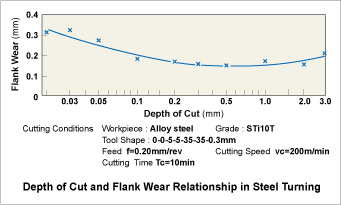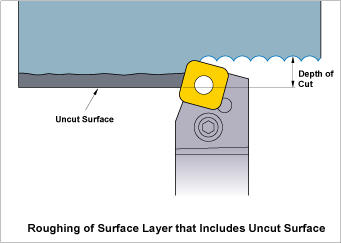
|
|
- Technical Information
- Effects of cutting conditions for turning
EFFECTS OF CUTTING CONDITIONS FOR TURNING
EFFECTS OF CUTTING CONDITIONS
Ideal conditions for cutting are short cutting time, long tool life, and high cutting accuracy. In order to obtain these conditions, a selection of efficient cutting conditions and tools, based on work material, hardness, shape and machine capability is necessary.
CUTTING SPEED
Cutting speed effects tool life greatly. Increasing cutting speed increases cutting temperature and results in shortening tool life. Cutting speed varies depending on the type and hardness of the work material. Selecting a tool grade suitable for the cutting speed is necessary.
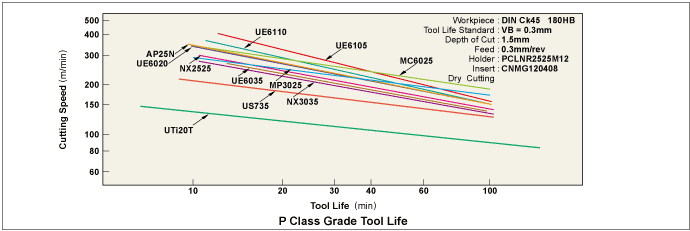
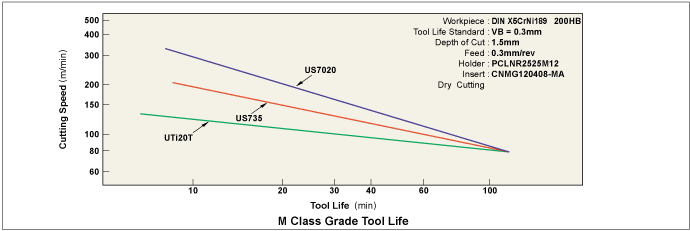
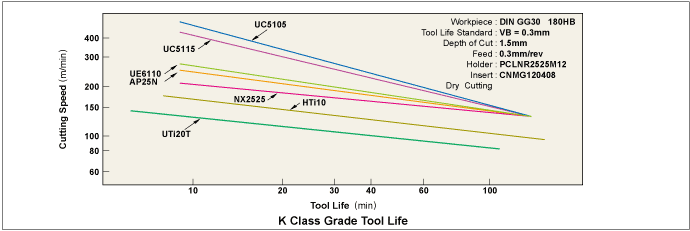
Effects of Cutting Speed
- Increasing cutting speed by 20% decreases tool life by 50%. Increasing cutting speed by 50% decreases tool life by 80%.
- Cutting at low cutting speed (20– 40m/min) tends to cause chattering. Thus, tool life is shortened.
FEED
When cutting with a general holder, feed is the distance a holder moves per workpiece revolution. In milling, feed is the distance a machine table moves per cutter revolution divided by number of inserts. Thus, it is indicated as feed per tooth. Feed rate relates to fi nished surface roughness.
Effects of Feed
- Decreasing feed rate results in fl ank wear and shortens tool life.
- Increasing feed rate increases cutting temperature and fl ank wear. However, effects on the tool life is minimal compared to cutting speed.
- Increasing feed rate improves machining efficiency.
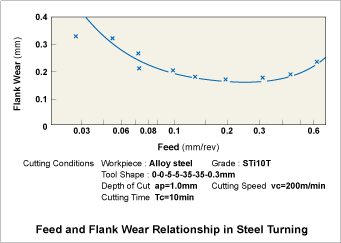
DEPTH OF CUT
Depth of cut is determined according to the required stock removal, shape of workpiece, power and rigidity of the machine and tool rigidity.
Effects of Depth of Cut
- Changing depth of cut doesn't effect tool life greatly.
- Small depths of cut result in friction when cutting the hardened layer of a workpiece. Thus tool life is shortened.
- When cutting uncut surfaces or cast iron surfaces, the depth of cut needs to be increased as much as the machine power allows in order to avoid cutting the impure hard layer with the tip of cutting edge and therefore prevent chipping and abnormal wear.
